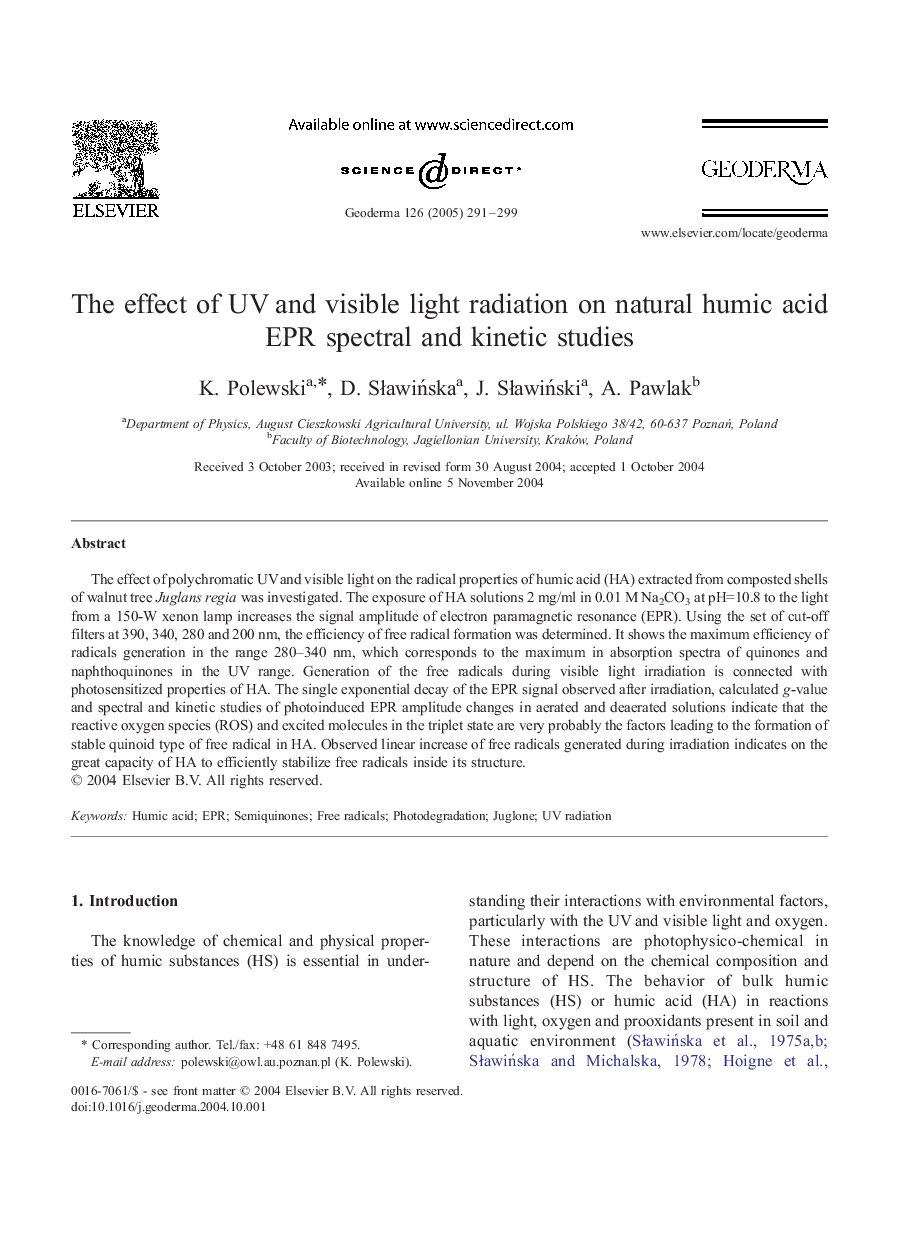| Article ID | Journal | Published Year | Pages | File Type |
|---|---|---|---|---|
| 9490591 | Geoderma | 2005 | 9 Pages |
Abstract
The effect of polychromatic UV and visible light on the radical properties of humic acid (HA) extracted from composted shells of walnut tree Juglans regia was investigated. The exposure of HA solutions 2 mg/ml in 0.01 M Na2CO3 at pH=10.8 to the light from a 150-W xenon lamp increases the signal amplitude of electron paramagnetic resonance (EPR). Using the set of cut-off filters at 390, 340, 280 and 200 nm, the efficiency of free radical formation was determined. It shows the maximum efficiency of radicals generation in the range 280-340 nm, which corresponds to the maximum in absorption spectra of quinones and naphthoquinones in the UV range. Generation of the free radicals during visible light irradiation is connected with photosensitized properties of HA. The single exponential decay of the EPR signal observed after irradiation, calculated g-value and spectral and kinetic studies of photoinduced EPR amplitude changes in aerated and deaerated solutions indicate that the reactive oxygen species (ROS) and excited molecules in the triplet state are very probably the factors leading to the formation of stable quinoid type of free radical in HA. Observed linear increase of free radicals generated during irradiation indicates on the great capacity of HA to efficiently stabilize free radicals inside its structure.
Related Topics
Physical Sciences and Engineering
Earth and Planetary Sciences
Earth-Surface Processes
Authors
K. Polewski, D. SÅawiÅska, J. SÅawiÅski, A. Pawlak,
